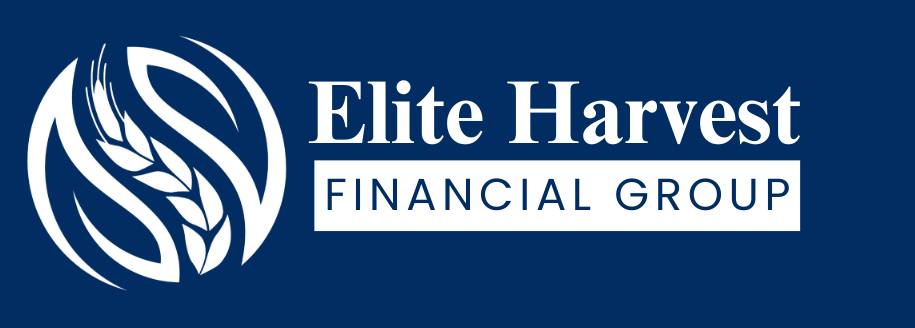Whole life insurance benefits go far beyond the basic death benefit that most people associate with life insurance policies. For high-net-worth executives, these policies represent powerful financial tools that can protect assets, transfer wealth efficiently, and create lasting legacies.
Unlike term insurance that expires without value, whole life insurance provides permanent coverage while building cash value that grows tax-deferred. This makes it particularly valuable for executives looking to diversify their wealth management strategies beyond traditional investment vehicles.
When structured properly, whole life insurance can serve as a cornerstone of your comprehensive financial plan. It offers unique advantages specifically designed to address the complex needs that come with substantial wealth—from providing tax-free benefits to creating liquidity for estate taxes.
In this guide, we’ll explore how to maximize whole life insurance benefits as part of your wealth preservation strategy. You’ll learn practical approaches for leveraging these policies to protect your assets, support business continuity, and even fund philanthropic goals.
Why Whole Life Insurance Matters for High-Net-Worth Executives
For high-net-worth executives, traditional financial planning often falls short of addressing complex wealth management needs. Whole life insurance steps in as a strategic asset rather than a simple safety net. This permanent coverage serves multiple purposes that align perfectly with the sophisticated financial objectives of affluent individuals.
Protection beyond income replacement
High-net-worth executives require financial solutions that extend beyond replacing lost income. Their concern shifts to preserving accumulated wealth and ensuring business continuity. Whole life insurance addresses these needs by functioning as a versatile financial tool that combines lifelong coverage with wealth-building components.
Additionally, these policies can protect business interests through strategies like:
- Funding buy-sell agreements between partners
- Providing key person protection for executive teams
- Supporting business succession planning
This protection ensures that family members or business partners can maintain control of assets without forced liquidation during emotional transitions. Furthermore, permanent life insurance can shield assets from creditors, preserving family wealth from potential legal challenges.
Tax-free death benefits and estate liquidity
One of the most compelling advantages for executives is the tax treatment of whole life insurance. Death benefit payouts are generally not taxable, allowing beneficiaries to receive the full amount without reduction. This creates immediate liquidity precisely when needed—sometimes as early as 30 days after death.
Estate taxes and probate fees can significantly diminish inheritances without proper planning. Whole life insurance provides the cash needed to cover these obligations without forcing the sale of valuable assets. Indeed, for wealthy individuals with substantial estates, life insurance can pay estate taxes to preserve asset values.
Moreover, properly structured whole life policies bypass probate entirely, delivering benefits directly to named beneficiaries. This feature protects funds from potential creditors, lawsuits, or marital disputes.
Long-term wealth preservation
Beyond protection, whole life insurance offers substantial wealth-building potential. The cash value component grows tax-deferred, meaning no taxes are paid on growth while funds remain in the policy. This feature essentially creates another tax-advantaged investment account alongside traditional retirement vehicles.
Permanent life insurance is considered a “non-correlated asset,” meaning its value remains stable regardless of market conditions. This characteristic provides balance to investment portfolios otherwise subject to market volatility.
Consequently, executives can access this accumulated cash value through:
- Tax-free policy loans during their lifetime
- Withdrawals up to the amount of premiums paid without tax implications
- Collateral for external loans at potentially favorable rates
These features make whole life insurance an essential component of comprehensive wealth planning for high-net-worth individuals. The guaranteed death benefit and predictable cash value growth allow for precise estate planning without reliance on market performance, interest rates, or economic volatility.
Key Strategies to Maximize Whole Life Insurance Benefits
Maximizing your whole life insurance policy involves strategic approaches that transform a standard protection vehicle into a powerful wealth management asset. Although basic coverage provides security, advanced techniques can substantially enhance the policy’s financial impact for high-net-worth individuals.
Using policies for estate tax funding
Estate tax obligations often catch heirs unprepared, compelling them to liquidate valuable assets at inopportune times. Whole life insurance creates immediate liquidity to cover these expenses, preserving the integrity of your estate. In Canada, when an individual dies, they are presumed to have disposed of all their assets, triggering taxes on RRSPs, RRIFs, and capital gains on investments—frequently at the highest tax rates.
A strategic approach involves purchasing a joint last-to-die policy with your spouse as the insureds. This arrangement potentially reduces insurance costs while ensuring payment occurs on the second death, precisely when the funds are most needed. The death benefit provides tax-free proceeds that your executor can use to pay capital gains taxes without selling valuable family assets or businesses.
For maximum effectiveness, consider allocating funds from taxable non-registered accounts toward insurance premiums. This effectively converts taxable assets into tax-free benefits—a particularly valuable strategy given recent increases in capital gains inclusion rates.
Leveraging cash value for tax-free loans
The cash value component of whole life insurance offers unique borrowing opportunities unavailable through traditional financial instruments. Policy loans represent one of the most powerful features when properly managed, allowing you to access funds without credit checks or rigid repayment schedules.
You can access this value through three primary methods:
- Policy loans: Borrow directly against your policy’s cash value without triggering taxes up to the policy’s adjusted cost basis. The loan accrues interest but doesn’t reduce your coverage or affect cash value growth. Any outstanding balance at death simply reduces the final payout.
- Collateral loans: Use your policy as security for third-party loans from banks or other lenders. This approach may offer lower interest rates without being considered a taxable disposition.
- Direct withdrawals: Take funds directly from your policy. These withdrawals remain tax-free up to the amount you’ve contributed (your policy’s adjusted cost basis).
For executives approaching retirement, policy loans provide supplemental income without affecting tax brackets or triggering additional taxes on Social Security benefits. This creates effective tax-free access while maintaining death benefit protection.
Creating liquidity for business succession
Business succession represents a critical challenge for company owners. Without adequate planning, unexpected departures can create leadership gaps, financial strain, and family conflicts. Life insurance functions as the cornerstone of effective succession planning.
A buy-sell agreement coupled with life insurance guarantees funding to purchase a deceased owner’s shares. This prevents forced liquidation and ensures fair compensation to the late owner’s family. The benefit amount typically correlates with the owner’s portion of company value—for instance, 50% of the business worth for a co-owner with equal stake.
Corporate-owned life insurance (COLI) offers additional advantages. Premiums are paid with after-tax corporate dollars (typically at lower rates than personal taxation), and death benefits flow through the Capital Dividend Account, allowing tax-free distribution to shareholders. This structure ensures business continuity while facilitating wealth transfer to the next generation without triggering significant tax consequences.
For family businesses, life insurance can also equalize inheritances among heirs—providing business interests to active family members while offering equivalent financial benefits to those uninvolved in company operations.
Advanced Tools for Wealth Transfer and Protection
Beyond basic strategies, sophisticated wealth transfer tools leverage whole life insurance for maximum protection and efficient wealth passage to future generations. These advanced mechanisms require careful planning yet offer substantial benefits for high-net-worth executives concerned with preserving their legacy.
Setting up an Irrevocable Life Insurance Trust (ILIT)
An Irrevocable Life Insurance Trust (ILIT) serves as a powerful legal structure that owns and manages a life insurance policy separate from your estate. By removing the policy from your taxable estate, the ILIT ensures death benefits remain free from estate taxes. This arrangement involves three parties: the grantor who establishes and funds the trust, the trustee who manages it, and the beneficiaries who ultimately receive the assets.
The benefits of an ILIT extend beyond tax advantages:
- It provides immediate liquidity to heirs without probate delays
- Assets within the trust enjoy protection from creditors of both the grantor and beneficiaries
- The trust allows precise control over when and how beneficiaries receive funds
Once established, the trust cannot be altered—hence, careful planning with financial and legal advisors is essential before implementation. To maintain tax advantages, trustees must send annual “Crummey notices” to beneficiaries regarding gifts to the trust.
Using life insurance for estate equalization
Estate equalization solves a common dilemma faced by business owners: how to fairly distribute assets among heirs when some want to continue the business while others prefer cash. Life insurance creates financial parity without forcing business liquidation.
For instance, if one child wishes to inherit and operate the family business while another has no interest, life insurance proceeds can provide equivalent value to non-participating heirs. This strategy prevents family conflict and ensures business continuity without disadvantaging any heir.
In practice, a business owner purchases a policy with a death benefit approximating the business value, naming non-participating heirs as beneficiaries. This approach effectively doubles or triples the estate’s value upon death, creating equitable distribution without dividing business interests.
Shielding assets from creditors
In most jurisdictions, whole life insurance offers exceptional protection from creditors—a significant consideration for executives in high-risk professions. This protection extends to both the policy’s cash value during life and the death benefit after passing.
The extent of protection varies by province; some offer unlimited protection for the full cash value, whereas others cap the protected amount. For maximum protection, consider designating family members as beneficiaries rather than your estate.
First, properly structured policies with irrevocable beneficiary designations typically shield assets from creditors’ claims. In fact, provincial insurance legislation often provides explicit creditor protection when family members are designated as beneficiaries.
Nonetheless, this protection has limitations. Last-minute beneficiary changes or excessive premium payments could be considered fraudulent conveyances and potentially overturned by courts. Therefore, establishing protection strategies well in advance of financial challenges remains crucial for maintaining their legitimacy.
Business Applications of Whole Life Insurance
Whole life insurance serves as a versatile business planning tool that extends well beyond personal wealth management. For corporations and partnerships, these policies provide strategic solutions to critical business challenges.
Funding buy-sell agreements
Buy-sell agreements establish what happens to business ownership when an owner dies or exits. Whole life insurance creates guaranteed funding for these transitions, preventing financial strain or forced liquidation. Two primary structures exist:
- Cross-purchase agreements: Partners purchase policies on each other. Upon death, surviving owners receive tax-free benefits to buy the deceased’s shares, increasing their cost basis in the business.
- Entity purchase agreements: The business owns the policies and buys out deceased owners’ interests. This approach requires fewer policies with multiple partners yet provides no increase in cost basis for surviving owners.
Without insurance funding, businesses often face difficult choices: selling assets at unfavorable terms, taking on debt, or allowing external parties to acquire ownership interests. Properly structured whole life insurance prevents these scenarios by providing immediate liquidity precisely when needed.
Key person insurance for executive teams
Key person coverage protects businesses against the financial impact of losing crucial team members whose absence would significantly affect operations, reputation, and profitability. According to research, 67% of businesses consider key person risk likely within three years, with 55% expecting high business impact from such losses.
This protection provides immediate funds to:
- Cover recruitment and training costs for replacements
- Offset lost revenue during transition periods
- Maintain creditor and customer confidence
- Preserve business stability during leadership changes
For high-net-worth executives whose specialized knowledge drives company success, this insurance offers peace of mind that their life’s work—the business they’ve built—remains protected.
Corporate-owned life insurance (COLI) strategies
Corporate-owned life insurance offers significant tax advantages, making it an efficient tool for business planning. COLI policies feature tax-deferred cash value growth, tax-free reallocation within policies, and tax-free receipt of death benefits.
This structure supports executive compensation programs through salary continuation plans for select employees. The business owns the policy as beneficiary, creating a mechanism to recover costs while providing deferred benefits.
COLI likewise enhances corporate succession planning by providing immediate liquidity upon ownership transitions without triggering tax consequences that might otherwise force asset liquidation.
Philanthropy and Financing Options
Life insurance offers powerful capabilities beyond traditional wealth management, especially in the realm of charitable giving and specialized financing options. These strategies enable high-net-worth executives to expand their financial impact through strategic philanthropy yet maintain liquidity for other opportunities.
Charitable giving through life insurance
Life insurance represents a cost-effective method for making substantial charitable donations. High-net-worth individuals can structure these gifts in several ways:
First, by naming a charity as the beneficiary of a new or existing policy, your estate receives the tax credit upon your death. Alternatively, transferring ownership of a policy to a charity provides immediate tax benefits—you receive donation receipts for the policy’s fair value plus any future premiums you pay.
For example, a single premium policy like Canada Life’s My Par Gift™ allows donors to make a one-time payment (minimum CAD 13,934) and receive an immediate donation receipt for the entire premium amount, which can offset up to 75% of annual net taxable income. This structure simultaneously creates a legacy gift worth 5-20 times the premium value.
Conclusion
Whole life insurance stands as an essential financial vehicle for high-net-worth executives seeking comprehensive wealth management solutions. Throughout this guide, we’ve examined how these policies transcend traditional insurance functions, offering substantial benefits tailored to complex financial situations.
Properly structured whole life insurance policies address multiple critical needs simultaneously. They create immediate liquidity for estate taxes without forced asset liquidation, provide tax-advantaged growth opportunities, and ensure business continuity through challenging transitions. Additionally, they shield accumulated wealth from creditors while establishing mechanisms for efficient wealth transfer to future generations.
The cash value component deserves particular attention from executives planning their financial futures. This feature essentially transforms insurance into a versatile asset, allowing tax-free access to funds through policy loans while maintaining death benefit protection. Coupled with strategies like Irrevocable Life Insurance Trusts, these policies become powerful tools for minimizing tax burdens and maximizing wealth preservation.
Business owners likewise benefit from specialized applications such as buy-sell funding, key person protection, and corporate-owned insurance. These strategies protect enterprises from devastating financial impacts following the loss of critical team members or ownership changes.
Beyond wealth preservation, whole life insurance enables meaningful philanthropic impact through charitable giving structures. Premium financing options further enhance flexibility, allowing executives to secure necessary coverage without disrupting existing investment strategies.
The true value of whole life insurance emerges when integrated into comprehensive financial planning. Working with specialized advisors ensures these powerful tools align precisely with your unique circumstances and objectives. After all, protecting and transferring wealth efficiently remains fundamental to securing your legacy for generations to come.







